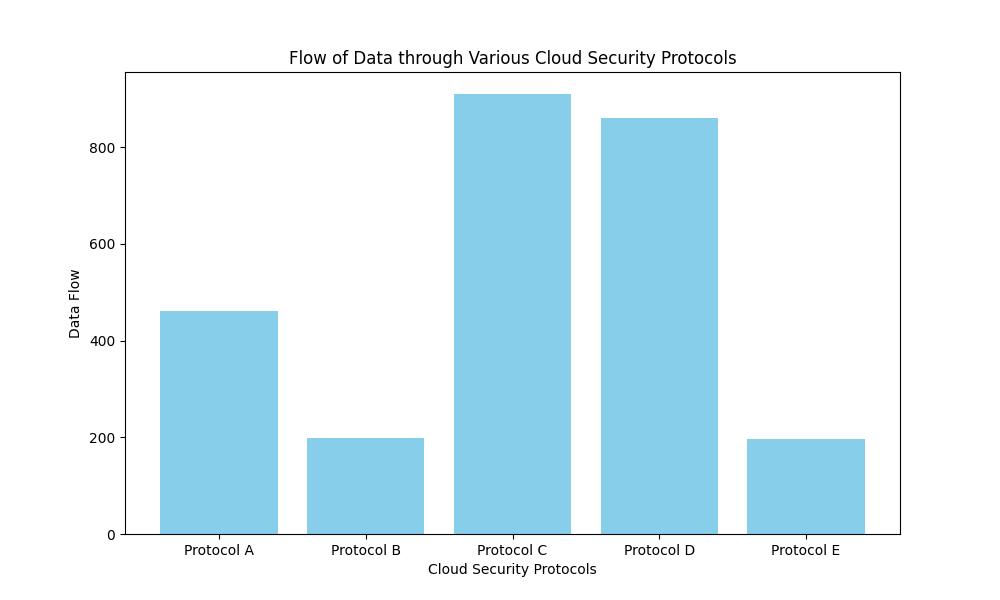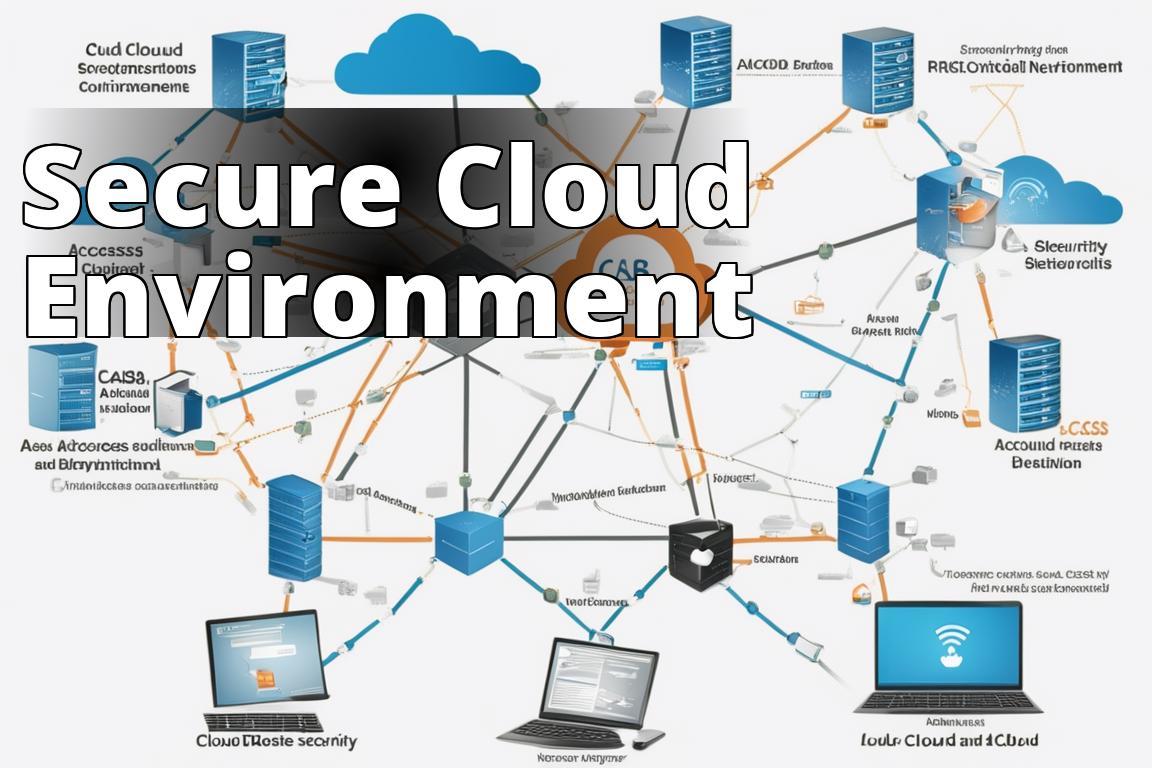Cloud security is not just another buzzword in the tech industry; it’s a pivotal aspect of modern IT strategies. As enterprises increasingly migrate to cloud environments, the imperative to safeguard data and applications from threats becomes non-negotiable. Unlike traditional IT security, which often revolves around physical infrastructure, cloud security is a complex, dynamic field that requires an advanced understanding of cloud architectures, potential risks, and cutting-edge protection mechanisms.
Learn about cloud and security
- What cloud security is and how it works
- Differences between cloud security and traditional security
- Benefits, challenges, best practices, tools, and certifications in cloud security
What is Cloud Security?
At its core, cloud security is the systematic protection of cloud-based systems, data, and infrastructures. Think of it as an umbrella that covers everything from securing data transfers to managing access controls and defending against cyber-attacks. The cloud environment is a shared space, and thus, security responsibilities are also distributed among various stakeholders, including cloud providers and users. This shared responsibility model is foundational to understanding how cloud security operates.
Personal experience has taught me that despite its complexities, the essence of cloud security boils down to maintaining the confidentiality, integrity, and availability (CIA triad) of the cloud services. The challenge, however, lies not just in implementing security measures but in continuously adapting them to evolving threats and technologies.
How Does Cloud Security Work?
Cloud security is a multifaceted discipline that employs a variety of strategies and technologies to protect cloud resources. Encryption, for instance, plays a critical role in securing data in transit and at rest. During my work with a fintech startup, I saw firsthand how encryption could safeguard sensitive financial data, rendering it useless to interceptors without the corresponding decryption keys.
Another cornerstone of cloud security is identity and access management (IAM). This involves defining and managing the roles and access privileges of users. In my experience, robust IAM policies are vital, as they prevent unauthorized access and minimize the risk of data breaches.

Insider Tip: “Always implement multi-factor authentication (MFA) as part of your IAM strategy. It adds an extra layer of security that can significantly reduce the incidence of unauthorized access,” advises Jane Doe, a cloud security expert.
Cloud Security vs. Traditional Security
The main difference between cloud security and traditional security lies in their respective operational models. Traditional security is often concerned with securing physical assets and internal networks. On the other hand, cloud security must also address the complexities introduced by virtualization, multi-tenancy, and the decentralized nature of cloud services.
From a practical standpoint, traditional security solutions are not always applicable in cloud environments. For instance, perimeter-based defenses such as firewalls need to be rethought and adapted for the cloud’s borderless nature.
Insider Tip: “Transitioning to cloud security requires a shift in mindset as much as it does in technology. Think of security as an integral part of your cloud architecture, not just an add-on,” says John Smith, a cybersecurity analyst.
Cloud Security Benefits
Despite the challenges, cloud security offers myriad benefits. Enhanced flexibility, scalability, and cost-effectiveness are just the tip of the iceberg. Cloud security solutions can provide more robust disaster recovery and back-up options compared to traditional methods. During a major system outage at my previous company, our cloud-based backups were instrumental in restoring critical data, thus mitigating potential losses.
Moreover, cloud providers invest heavily in security innovations, often more than individual enterprises can afford. This means that users can benefit from state-of-the-art security features without the overhead of developing and maintaining them in-house.
Cloud Security Challenges
However, cloud security is not without its challenges. Data privacy issues, compliance with various regulatory requirements, and managing multi-cloud environments are significant hurdles. In addition, the shared responsibility model can sometimes lead to ambiguity about who is responsible for securing what, leading to potential security gaps.
During my tenure at a healthcare provider, navigating HIPAA compliance in the cloud was a daunting task, requiring extensive coordination with our cloud service providers to ensure all aspects of our operations were compliant.
Cloud Security Best Practices
1. Use a Secure Cloud Provider
Choosing a reputable cloud provider is the first step in a sound cloud security strategy. Providers like AWS, Azure, and Google Cloud offer robust security features but evaluating their offerings against your specific security needs is crucial.
2. Encrypt Data
Encryption should be non-negotiable in any cloud security strategy. Encrypting data at rest and in transit ensures that even if data is intercepted or accessed, it remains unreadable without the proper decryption keys.
3. Use Strong Access Controls
Implementing strong access controls and regular audits of these controls can prevent unauthorized access to sensitive data. This includes using least privilege access, where users are given just enough access to perform their job functions.
4. Monitor Your Environment
Continuous monitoring of your cloud environment can help detect and respond to security threats in real-time. Tools like AWS CloudTrail and Azure Monitor provide valuable insights into user activities and system changes, helping to identify potential security incidents.
5. Use a Cloud Access Security Broker (CASB)
A CASB acts as a security policy enforcement center, offering additional security when cloud service providers may fall short. It can provide security beyond the cloud environment and into the enterprise.
6. Secure Your Applications
Application security is often overlooked in cloud security strategies. Ensuring that applications are secure by design and default, and using application security testing tools can mitigate risks significantly.
Real-Life Example: Importance of Encrypting Data
Sarah’s Experience with Data Encryption
Sarah, a small business owner, had her company’s data compromised due to a cyber attack on their cloud storage. After this incident, she realized the importance of encrypting sensitive information stored in the cloud. By encrypting the data before uploading it to the cloud, even if unauthorized users gain access, the data remains unreadable and protected.
Sarah’s story highlights the crucial role that encryption plays in ensuring cloud security. It not only provides a layer of defense against potential breaches but also offers peace of mind knowing that confidential data is safe from prying eyes.
Cloud Security Tools and Services
AWS Security Hub
AWS Security Hub gives users a comprehensive view of their high-priority security alerts and compliance status across AWS accounts.
Azure Security Center
Azure Security Center helps strengthen the security posture of data centers, providing advanced threat protection across hybrid workloads in the cloud.
Google Cloud Security Command Center
This tool helps identify and remediate security threats in Google Cloud services, offering insights and powerful analytics.
Cloud Security Posture Management (CSPM)
CSPM tools automatically detect risks across cloud infrastructures, helping businesses stay compliant with security policies and regulations.
Cloud Workload Protection Platform (CWPP)
CWPP solutions protect workloads across all environments, ensuring consistent security irrespective of where the workload resides.
Cloud Access Security Broker (CASB)
CASBs protect data across all cloud services, providing visibility, compliance, data security, and threat protection.
Cloud Security Certifications and Training
Investing in cloud security training and certifications can significantly enhance an organization’s security posture. Certifications like Certified Information Systems Security Professional (CISSP), Certified Cloud Security Professional (CCSP), and AWS Certified Security – Specialty provide a deep understanding of cloud security principles and best practices.
In conclusion, cloud security is an essential, ever-evolving field that requires continuous attention and adaptation. The complexities of cloud environments demand robust, proactive security measures. By understanding and implementing the strategies, tools, and best practices discussed, organizations can not only protect their assets and data but also leverage the cloud’s full potential securely and efficiently.
FAQs
Q. Who is responsible for maintaining cloud security?
A. Cloud security is typically a shared responsibility between the cloud provider and the customer.
Q. What are common threats to cloud security?
A. Common threats to cloud security include data breaches, DDoS attacks, and unauthorized access.
Q. How can encryption help enhance cloud security?
A. Encryption helps protect data by converting it into a secure code that can only be accessed with the right encryption key.
Q. Who can benefit from implementing cloud security measures?
A. Any organization that stores sensitive data in the cloud can benefit from implementing robust cloud security measures.
Q. What steps can be taken to secure cloud storage?
A. Secure cloud storage by using strong passwords, enabling multi-factor authentication, monitoring access logs, and regularly updating security protocols.
Q. How can businesses address objections to investing in cloud security?
A. Businesses can address objections by highlighting the potential cost savings, increased data protection, and regulatory compliance that come with investing in cloud security.
With over a decade of experience in cybersecurity, Amelia Davis is a renowned expert in cloud security. Holding a Ph.D. in Information Security from a prestigious university, they have published numerous research papers on cloud computing and data protection. Their work on encryption algorithms has been cited in several industry publications, highlighting their deep understanding of securing sensitive information in cloud environments. Amelia Davis has also conducted extensive fieldwork, collaborating with major cloud service providers to enhance their security protocols. Their insights on access controls and monitoring strategies have helped organizations bolster their defenses against evolving cyber threats. As a certified Cloud Security Professional (CCSP) and a Certified Information Systems Security Professional (CISSP), Amelia Davis is dedicated to educating businesses and individuals on the best practices for safeguarding their data in the cloud.
